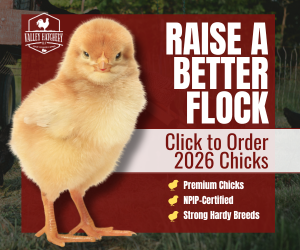CurvyCoop
Songster
I'm designing my own coop for the future, no chickens yet, but hopefully soon. My first design was just going to be a wooden coop. A frame set up and then siding on both sides of the frame. But I've been doubting my choices recently for two reasons.
Firstly: MITES! I've been reading up on how to prevent red mite infestations in your coop and the pictures of really bad infestations have burned themselves onto my eyeballs I'm not usually affected by a few bugs but... YECH! Apparently red mites especially like to live in cracks and if I'd put siding up both sides of a frame I can be sure that I create a nice space for them I can't EVER reach again... not ideal to say the least. A coop with brick walls would have way less hiding space. Even if the inner structure is built up out of wood it would have far fewer nooks and crannies for icky mites to hide.
I'm not usually affected by a few bugs but... YECH! Apparently red mites especially like to live in cracks and if I'd put siding up both sides of a frame I can be sure that I create a nice space for them I can't EVER reach again... not ideal to say the least. A coop with brick walls would have way less hiding space. Even if the inner structure is built up out of wood it would have far fewer nooks and crannies for icky mites to hide.
Secondly: we just had a really big storm pass through yesterday and while it's definitely not the norm around here and very much a freak event, we all know that climate change is a bitch and who can say if freak storms like these aren't going to become more normal? We made it through problem free but all around the area there is massive damage and I just couldn't stop thinking of how one little wooden coop would stand up to winds of almost 80 mph. A solid brick coop would be much more secure and I'd be far less worried of it blowing over. (yeah this storm really got to me)
A solid brick coop would be much more secure and I'd be far less worried of it blowing over. (yeah this storm really got to me)
Brick feels more sturdy and less parasite-y, but there's a good reason wood's more popular. It's cheaper for one, and easier to put up. Easier to modify too, cutting through some siding to install an extra pop door is a lot easier than breaking through a brick wall. Decisions decisions
What are your thoughts?
Firstly: MITES! I've been reading up on how to prevent red mite infestations in your coop and the pictures of really bad infestations have burned themselves onto my eyeballs
 I'm not usually affected by a few bugs but... YECH! Apparently red mites especially like to live in cracks and if I'd put siding up both sides of a frame I can be sure that I create a nice space for them I can't EVER reach again... not ideal to say the least. A coop with brick walls would have way less hiding space. Even if the inner structure is built up out of wood it would have far fewer nooks and crannies for icky mites to hide.
I'm not usually affected by a few bugs but... YECH! Apparently red mites especially like to live in cracks and if I'd put siding up both sides of a frame I can be sure that I create a nice space for them I can't EVER reach again... not ideal to say the least. A coop with brick walls would have way less hiding space. Even if the inner structure is built up out of wood it would have far fewer nooks and crannies for icky mites to hide. Secondly: we just had a really big storm pass through yesterday and while it's definitely not the norm around here and very much a freak event, we all know that climate change is a bitch and who can say if freak storms like these aren't going to become more normal? We made it through problem free but all around the area there is massive damage and I just couldn't stop thinking of how one little wooden coop would stand up to winds of almost 80 mph.
 A solid brick coop would be much more secure and I'd be far less worried of it blowing over. (yeah this storm really got to me)
A solid brick coop would be much more secure and I'd be far less worried of it blowing over. (yeah this storm really got to me)Brick feels more sturdy and less parasite-y, but there's a good reason wood's more popular. It's cheaper for one, and easier to put up. Easier to modify too, cutting through some siding to install an extra pop door is a lot easier than breaking through a brick wall. Decisions decisions
What are your thoughts?



